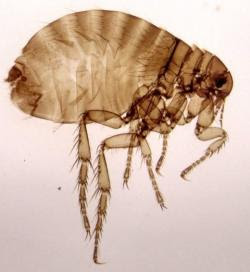Plague is an infectious disease that affects animals and humans. It causes
by the bacterium Yersinia pestis. This bacterium is found in rodents and their
Fleas and occurs in many parts of the world, including the United States.
Y. pestis is easily destroyed by sunlight and drying. However, if they let go
is in the air, the bacteria can survive up to one hour, although this
vary depending on conditions. Pneumonic plague is one form of the plague.

Under the circumstances, these forms can occur alone or in combination:
Pneumonic plague occurs when Y. pestis infects the lungs. This type of plague
can spread from person to person through the air. Transmission can occur
when someo ne breathes aerosol bacteria that could happen in the event of a biological agent
Attack.
Pneumonic plague is also affected by inhalation of Y. pestis spread of respiratory suspended
Droplets from a person (or animal) with pneumonic plague. Infected
In this way usually requires dir ect and close contact with an infected person or
Animal.
Pneumonic plague can also occur when a person with bubonic plague, septicaemic
untreated and spread of bacteria in the lungs. Bubonic plague is the
The most common form of plague. Will this product when an infected person or a flea bite, if
Materials with Y. Contaminated pestis enter through a break in the skin of a man.
Patients develop buboes, swollen, tender lymph nodes (called) and fever, headache,
Chills and weakness. Bubonic plague is not spread from person to person.
Septicemic plague occurs when plague bacteria multiply in the blood. It may
a complication of pneumonic or bubonic plague or it can occur by itself.
If it appears alone, it caused the same way as the plague;
Buboes do not develop. Patients have fever, chills, weakness, abdominal pain,
Shock and bleeding into the skin and other organs.
Septicemic plague not transmitted from person to person. Symptoms and treatment
Pneumonic plague, the first signs of illness, fever, headache, weakness,
and rapidly developing pneumonia with shortness of breath, chest pain, coughing,
sputum and sometimes bloody or watery. Pneumonia lasts 2 to 4 days
and can lead to respiratory failure and shock.
Without early treatment may reduce patients. Early treatment of pneumonic plague
is essential. To reduce the likelihood of death, antibiotics must be taken in
24 hours after the first symptoms. Streptomycin, gentamicin, tetracycline and
Chloramphenicol is effective against pneumonic plague. Antibiotic treatment
7 days is to protect people who have had direct and close contact with infected
Patients.
Wearing a tight-fitting surgical mask also protects against infection.Plague
is an infectious disease that affects animals and humans. It is caused by the
Bacterium Yersinia pestis. This bacterium is found in rodents and their fleas
and occurs in many parts of the world, including the United States. Y. pestis
is easily destroyed by sunlight and drying.
However, if released into the air, the bacteria will survive to an hour
Although that function conditions. Pneumonic plague is one of
various forms of plague. Under the circumstances, these forms occur separately in May
or in combination:




